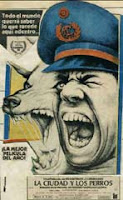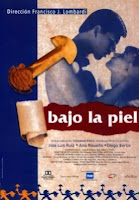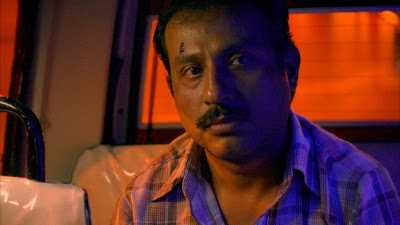 The title of Ricardo de Montreuil's La mujer de mi hermano translates as "My Brother's Woman," and really that's all you need to know about this souped-up but stylish telenovela. You can imagine the plot for yourself: two brothers, like chalk and cheese, one a successful but boring businessman in suit and tie, the other a dashing young artist in leather jacket and stubble. Businessman brother's wife is tiring of her literally sterile life in a designer-label cocoon in which they have sex only once a week. One day while hubby is off on a business trip, she falls into bed with artist brother. Sparks and moral dilemmas fly. Childhood trauma and repressed identities come to the surface. But, in this case at least, they all live happily ever after.
The title of Ricardo de Montreuil's La mujer de mi hermano translates as "My Brother's Woman," and really that's all you need to know about this souped-up but stylish telenovela. You can imagine the plot for yourself: two brothers, like chalk and cheese, one a successful but boring businessman in suit and tie, the other a dashing young artist in leather jacket and stubble. Businessman brother's wife is tiring of her literally sterile life in a designer-label cocoon in which they have sex only once a week. One day while hubby is off on a business trip, she falls into bed with artist brother. Sparks and moral dilemmas fly. Childhood trauma and repressed identities come to the surface. But, in this case at least, they all live happily ever after.The film is actually about homosexuality, unsurprising perhaps given that it is based on the novel and scripted by Jaime Bayly, author also of the far superior No se lo digas a nadie. We have the bitchy gay male friend who is wife Zoë's confidante, reveling in the steamy details of his friend's infidelity; the obsessively tidy and metrosexual husband Ignacio turns out to be a closet gay, oh and a youthful paedophile to boot; and of course the love triangle itself, with the two men sharing a single woman, is all about homosocial desire.
All this takes place in an ambience of pristine upper-class sophistication, in a palette of muted earth tones drenched in soft late-season sunlight. Zoë and Ignacio live in a designer house that is a glass and concrete box, whose major feature is a swimming pool that traverses inside and outside. And however much Ignacio obsessively cleans the pool of autumn leaves or stranded insects (he's rich but not rich enough for a pool boy?), each major character feels compelled at some point to throw something into the water: Ignacio chucks his brother's painting; Zoë dumps her mobile phone; and artist brother Gonzalo pisses into it. Now there's a statement. It's the closest this film comes to depth.
Beyond these markers of privilege and style, tainted by the introduction of human bodily fluids, this ethereal film is curiously ungrounded. It's a pan-Latin American effort, made by a Peruvian director, set in Mexico, filmed in Chile, with stars from Peru, Mexico, Uruguay, and Colombia. We get little sense of the world beyond these characters' self-focussed lives: when Ignacio goes on his business trip, the hotel from which he phones home (little knowing his brother is in the house with her as he speaks) is another anonymous construction of glass and concrete that could be almost anywhere. This is a Latin version of Eurotrash: the flotsam and jetsam of a regional bourgeoisie at home everywhere and nowhere.

In the end, the film is as superficial as the world it portrays: all surfaces and bleached, unsaturated veneers; a cold borderless neoliberalism in which brief titillation artfully shot replaces passion or human interest. We're as far from, say, Chicha tu madre as could be imagined. And of the two versions of deterritorialized Latin Americanism, I know which one I'd choose.
YouTube Link: the film's first ten minutes.




























